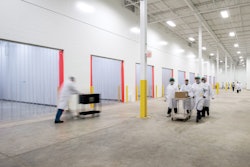
In the past few decades we have seen China emerge as the world leader in manufacturing. China has created designated economic development zones and increased its infrastructure in coastal areas, and its population has moved to fill jobs in these areas. As demand for workers has begun to meet and sometimes exceed supply, developments have led to fundamental changes that have largely resulted in increased costs that make Chinese produced goods more expensive than they once were.
Charles Fishman, in his December 2012 Atlantic magazine article, “The Insourcing Boom,” noted: “In dollars, wages in China are some five times what they were in 2000—and they are expected to keep rising 18 percent a year.“
Cost concerns along with challenges of doing business in China have led to a number of creative solutions. Some companies have expanded, moved and/or partnered with companies in other Southeast Asian countries that offer demographic and economic conditions similar to that of China’s in years past. We have even heard of Chinese businesses building plants in other countries as they believe location is not as important to their customers as price and quality are.
Now, companies are evaluating outsourced manufacturing more broadly as they look at implications and consider re-shoring (or, not off-shoring). These considerations include:
•
Cash flow implications of an extended production and transportation cycle.
•
Delayed speed to market.
•
Cycle time to consumer purchase considering “freshness” of the product as well as implications for product changes or enhancements. It’s challenging when there is almost always 20 weeks of inventory in the system, minimum.
•
For innovative products or processes, risk of compromised intellectual property.
•
Manpower required to manage, lead and/or direct offshore suppliers.
•
Costs of addressing any issues (quality or otherwise) or supply chain disruptions in terms of time, travel and transportation costs (e.g., substituting
air freight).
•
The probability that future energy prices will increase, resulting in increased costs. (Conversely, the natural gas boom is making U.S. energy prices look much more attractive.)
•
Environmental concerns of the increased energy used in transportation from distant manufacturing locations.
•
Being a great distance from manufacturing removes product and technical familiarity that can promote opportunities for continuous improvement.
•
Language barriers can impede business processes.
In light of these factors, many companies are asking themselves: Is offshoring really worth it? Did it only look favorable at first blush? If you look at the fully loaded costs, is it really a benefit? The answer many companies are coming to is: No, it isn’t.
In his Atlantic piece, Fishman quotes Harry Moser, founder of the Reshoring Initiative (www.reshorenow.org), saying that “about 60 percent of the companies that offshored manufacturing didn’t really do the math. They looked only at the labor rate—they didn’t look at the hidden costs.” Moser believes that about a quarter of goods made outside the U.S. could be more profitably made at home.
Cost isn’t the only reason we’re seeing renewed interest in North American manufacturing: It’s about the product life cycle. New and improved products are now core to our markets, with customers and consumers demanding increasing personalization and responsiveness. This is difficult to achieve with an extended supply chain. It also makes flexibility, a key capability of North American contract manufacturing and packaging, a “must have” in the supplier selection process.
Beyond that, in this hypercompetitive marketplace, close geographical and collaborative relationships with suppliers can reap huge rewards as the knowledge and capabilities of both parties are leveraged to the benefit of all. The value created through these partnerships takes outsourced manufacturing to a whole new level, a largely untapped opportunity in our industry.
Lisa Shambro is Executive Director of the Foundation for Strategic Sourcing/F4SS. Contact her at [email protected]

























